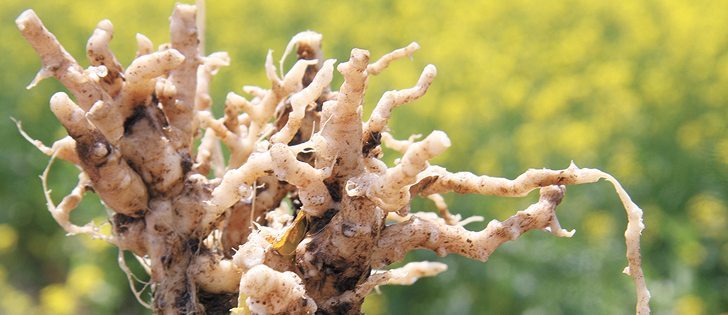Certain fields near Edmonton have close to a billion clubroot spores in a gram of soil.
In Manitoba, provincial testing shows that many fields have 1,000 to 10,000 spores in a gram of soil.
One thousand is nowhere near a billion, but Manitoba producers need to plant canola varieties resistant to clubroot if they want to keep spore concentrations in check, said Clint Jurke, the Canola Council of Canada’s agronomy director.
“If you use a susceptible variety and you have a low level of (clubroot) in your field, you will build up that disease to those Edmonton quantities in two cycles…. You’re two canola rotations from having an Edmonton (type) problem,” Jurke told Manitoba Ag Days in Brandon last month.
Read Also

VIDEO: Agritechnica Day 4: Robots and more robots, Nexat loves Canada and the trouble with tariffs
Agritechnica Day 4: Robots and more robots, Nexat loves Canada and the trouble with tariffs.
“That’s the reason why we are recommending to producers … from northern B.C. all the way to the Red River Valley to start using clubroot resistance now. This is a tool that will keep your spore loads down to a minimum.”
Clubroot is a soil-borne disease that causes swellings, or galls, to form on the roots of canola, choking off water and nutrients to the growing plant.
The disease spreads when contaminated soil or plant debris is transported from field to field.
Clubroot grabbed the attention of Manitoba producers last fall when galls were found on canola plants near Swan River. A 15 acre patch of a field, infected with clubroot, had yields of 10 bushels per acre. It was one of the first reported cases in Manitoba where clubroot had a drastic impact on canola production.
Manitoba Agriculture’s soil tests indicate that five rural municipalities have fields with clubroot spore concentrations higher than 80,000 per gram of soil or have fields where clubroot symptoms were found on canola plants: Louise, Pembina, Portage la Prairie, Westlake-Gladstone and Swan Valley West.
Fields in those areas may have higher spore loads, but Manitoba Agriculture is encouraging all growers to assess their farm for clubroot.
“The right thing and the first thing to be doing is testing your soil,” said Pratisara Bajracharya, provincial field crop pathologist.
If a producer knows the amount of clubroot in the soil, that information can be used to make disease management decisions.
There is no economic threshold for clubroot: a field has the disease whether it has 1,000 or 50,000 spores per gram, Bajracharya said.
A few producers have suggested that clubroot has been in Manitoba soil at low levels for a long time, and there’s no need to panic.
Jurke said that perspective is possible but risky.
“There is a chance that some of this background, low-level stuff may be something different,” he said. “But for the time being, take a cautious approach and assume it is related to the Alberta (strain), which is very aggressive.”
Canola growers have asked Jurke if it’s wise to plant varieties with resistance to clubroot when spore concentrations in the soil are low. It may give the disease a chance to mutate and overcome the resistance trait.
Jurke said clubroot changed and new strains quickly defeated resistant varieties in central Alberta. Resistance broke down in four years around Edmonton because a mutation is more likely when there are a billion spores in a gram of soil.
An unwelcome mutation is less likely In fields with 1,000 spores per gram.
“How long is it (a resistant trait) going to last in Manitoba?” Jurke said. “I don’t think it’s going to last a million times longer, but it’s going to last a lot longer than four years.”
More than a dozen varieties with resistance to clubroot are on the market, but there isn’t enough seed to cover every acre on the Prairies with resistant canola.
Hopefully the supply will soon increase, Jurke said.
“In the next five years, if we can get to that point where everybody is using nothing but resistant (varieties), I think we’re going to be in good shape.”
Clubroot myths
Clint Jurke, the Canola Council of Canada’s agronomy director, says a few misconceptions about clubroot haven’t gone away.
- Clubroot can’t develop in high pH soils. False. The canola council says soils with pH over 7.2 do restrict spore germination, but high pH soils will not prevent disease development or yield losses.
- High boron levels in the soil can prevent clubroot. True. But Jurke said the boron level must reach a concentration where it also kills canola plants.
















